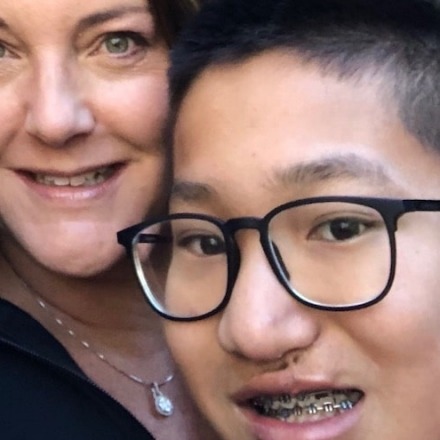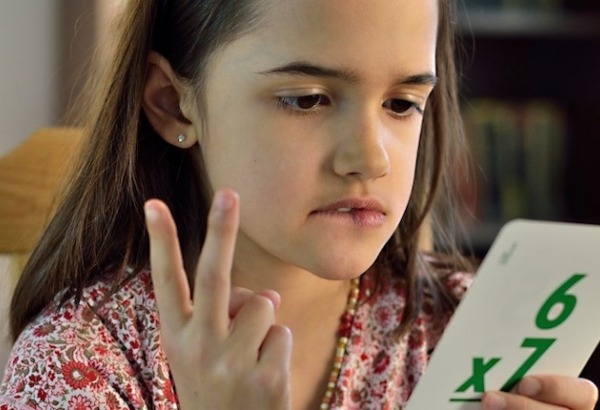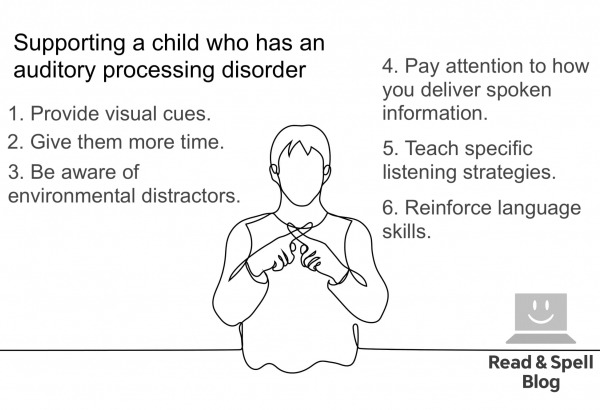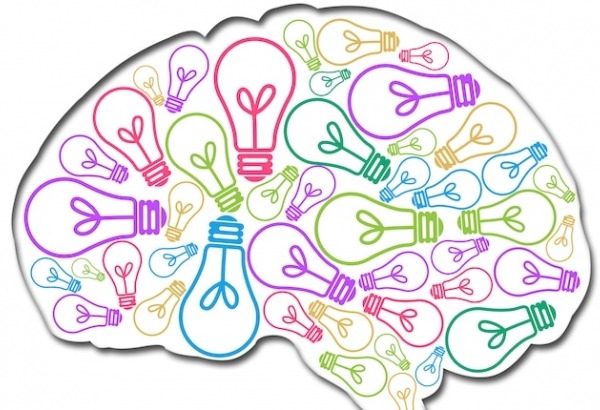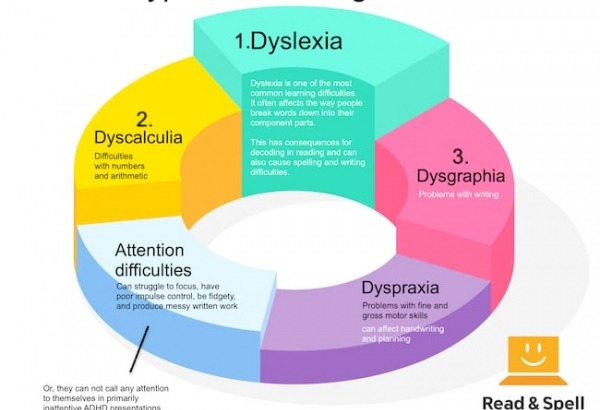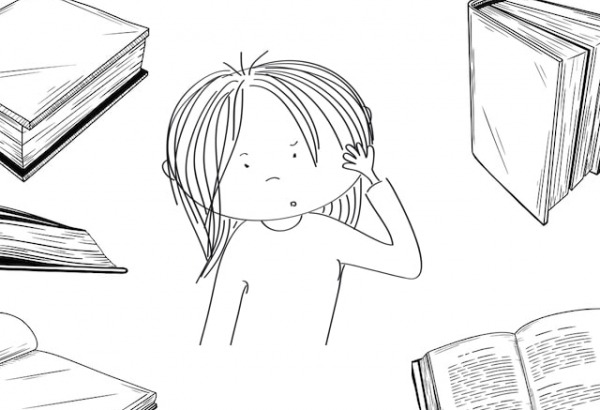Dyspraxia vs. apraxia of speech

Dyspraxia is a fine and/or gross motor skills difficulty that may also affect learning. Symptoms range in severity and can make it difficult for a child to dress him or herself, hold a pen or pencil and perform other daily activities. Estimates in the UK suggest that 1 child in every 10 struggles with some form of dyspraxia.
While apraxia is a related neurological condition, it represents a complete loss of motor skills impairing a person in a particular capacity. There are different kinds of apraxia but in the case of apraxia of speech, the muscles of the mouth including the tongue, jaw, cheeks, palate and lips cannot be coordinated to produce intelligible spoken language.
Because dyspraxia and apraxia affect the body’s ability to communicate with certain muscles, reading skills are not directly impacted but writing and speaking can be a challenge. Children may also be at risk for suffering low self-esteem and can easily become discouraged at school.
In both cases it’s important to have a diagnosis early on so individuals can receive appropriate treatment, including physical therapy and learning the coping strategies needed to achieve their full potential in and outside of the classroom.
Dyspraxia
Children who have dyspraxia may struggle to complete written assignments at school. They can have trouble using scissors, holding a paintbrush or drawing utensil in art class, playing an instrument and participating in physical education lessons.
They may even struggle with routine activities such as zipping up a backpack or entering the code on a locker door. Dyspraxia sometimes affects planning skills too. Every child with dyspraxia is different so no two individuals will have the same set or severity of symptoms.
Note that dyspraxia is a different condition than dyslexia, a language based learning difficulty that primarily affects reading and spelling. Nonetheless, dyslexia and dyspraxia can occur together. Learn more about the difference between dyslexia and dyspraxia.
Helping a child with dyspraxia
Because of the difficulty children with dyspraxia experience when writing by hand, taking notes in class can be particularly problematic. That’s why it may be advantageous for teachers to pair kids up with a note-taking buddy. Providing plenty of folders and an agenda can help with organization and planning.
It’s also recommended that children and adults learn how to touch type. This is because, just like for individuals with dysgraphia, a keyboard can be much easier to manipulate than holding a pen or pencil. It eliminates any messiness or embarrassment due to poorly formed letters and spacing. Learning to type also enhances reading and spelling ability.
Learn more about helping students with dyspraxia in the classroom.

What is Apraxia?
Apraxia is a complete loss of ability to coordinate a target set of muscles despite the body’s tissues being healthy and an individual wanting to perform a certain movement. It is perhaps less well-understood than other neurological conditions. Researchers don’t yet know if it is genetic and symptoms can vary from person to person.
There are many different kinds of apraxia but in all of them a signal sent from the brain does not have its intended effect. In limb-kinetic the arms and legs are affected making it difficult to voluntarily wave or kick. Ideomotor prevents someone from responding to commands using appropriate movements-- for example playing a game like "Simon Says" in which children must mime different hand motions.
Ideational apraxia interrupts a series of movements required to operate a tool or perform a multi-step operation. In buccofacial individuals are not able to whistle, wink or even cough voluntarily.
Oculomotor has to do with seeing and moving the eyes. Individuals with dressing apraxia cannot understand the orientation or sequence required to put clothes on and constructional makes it very hard to draw or build things.
Apraxia of Speech
Sometimes referred to as Childhood Apraxia of Speech or CAS, in this kind of apraxia the muscles of the face and throat are impacted in a way that makes it difficult to speak. The condition can be something you are born with or acquire because of trauma to the brain.
In very young children under the age of 2 doctors may initially hold off on a diagnosis to be sure it isn’t just slow language development. Unlike aphasia, in apraxia of speech language comprehension is not affected. In fact, often children develop very strong receptive language skills. Nonetheless, babies tend to babble less and may be late to produce their first words.
Treatment must fit the individual and focus on rehabilitation. Certain phonemes will be easier than others and only a speech-language pathologist will be able to help train the mouth and jaw to produce the sounds needed for intelligible speech. Teaching children silly songs and other sound language games can help with phonemic awareness. Combining sounds in nonsense play that alternates stress and rhythm is another good idea.

Building confidence and self-esteem
Both apraxia of speech and dyspraxia affect learning ability but are not related to intelligence. In the case of dyspraxia, parents and teachers may wish to encourage children to pursue alternative sports, hobbies or activities that are comfortable to perform.
For example, with the Touch-type Read and Spell program, tutors and parents can provide instruction on touch-typing on the computer if handwriting is difficult. Physical activities in gym class may be hard but walking can be an easier way to get exercise.
While speech therapy is important for a child with CAS, so is teaching him or her alternative ways to communicate, including providing instruction in sign language. It doesn’t have to be a standard version; you can simply create your own signs or hand motions that come naturally—anything to make communication less frustrating.
Learning typing can also be helpful because it allows a child to express more complex ideas in writing when speech is not available.
Any activities that enable kids to develop a positive self-image and build confidence in their abilities are helpful. Confidence is key but so is motivation and providing children with the encouragement they need to succeed.
Additional resources
For many students, developing typing skills is the key to overcoming the challenges posed by motor skills and speech difficulty and achieving success at school. Kids can learn how to type as soon as their hands fit comfortably on the keyboard. This is usually at 6 or 7 years old.
Touch-type Read and Spell has a touch-typing program that provides kids with dyspraxia and CAS a multi-sensory method of learning to type. This means they hear a word spoken, see it on the screen and then type the corresponding keys which helps to reinforce learning in memory and enhances reading and spelling ability at the same time.
For those students who also struggle with dyslexia, ADD or ADHD, TTRS is recommended by the British Dyslexia Association as it takes an Orton-Gillingham phonics based approach to teaching typing. The course has also been used to teach children with Down syndrome, those with sensory impairments, and those whose mother tongue is not English.
For learners who struggle with dyspraxia
TTRS is a program designed to get children and adults with dyspraxia touch-typing, with additional support for reading and spelling.
Chris Freeman
TTRS has a solution for you
An award-winning, multi-sensory course that teaches typing, reading and spelling

How does TTRS work?
Developed in line with language and education research
Teaches typing using a multi-sensory approach
The course is modular in design and easy to navigate
Includes school and personal interest subjects
Positive feedback and positive reinforcement
Reporting features help you monitor usage and progress

